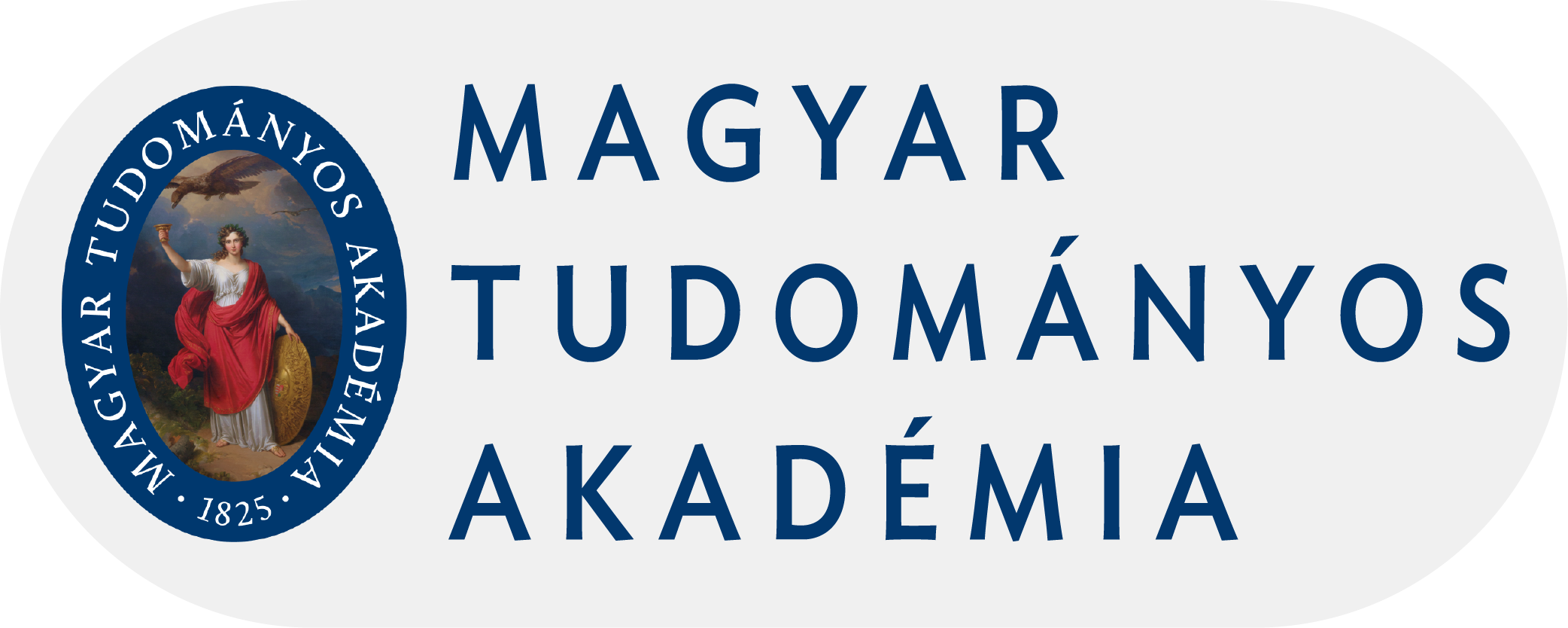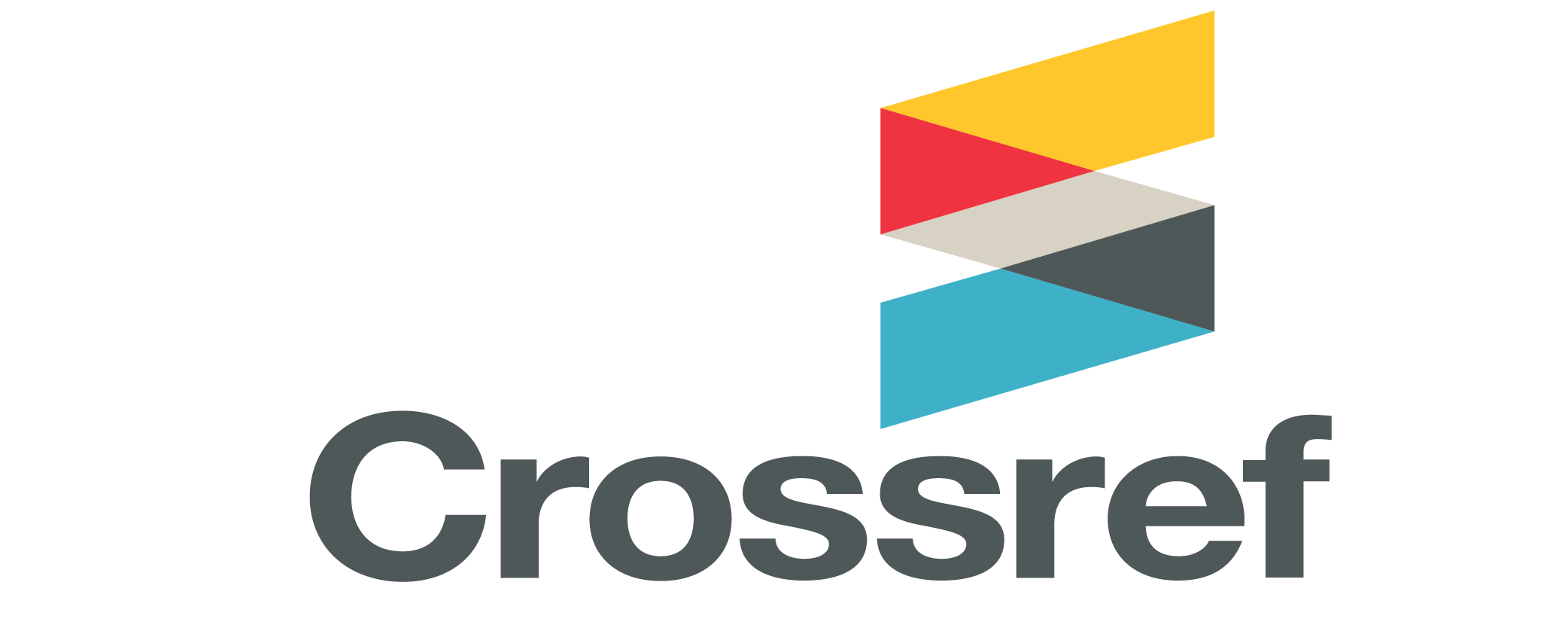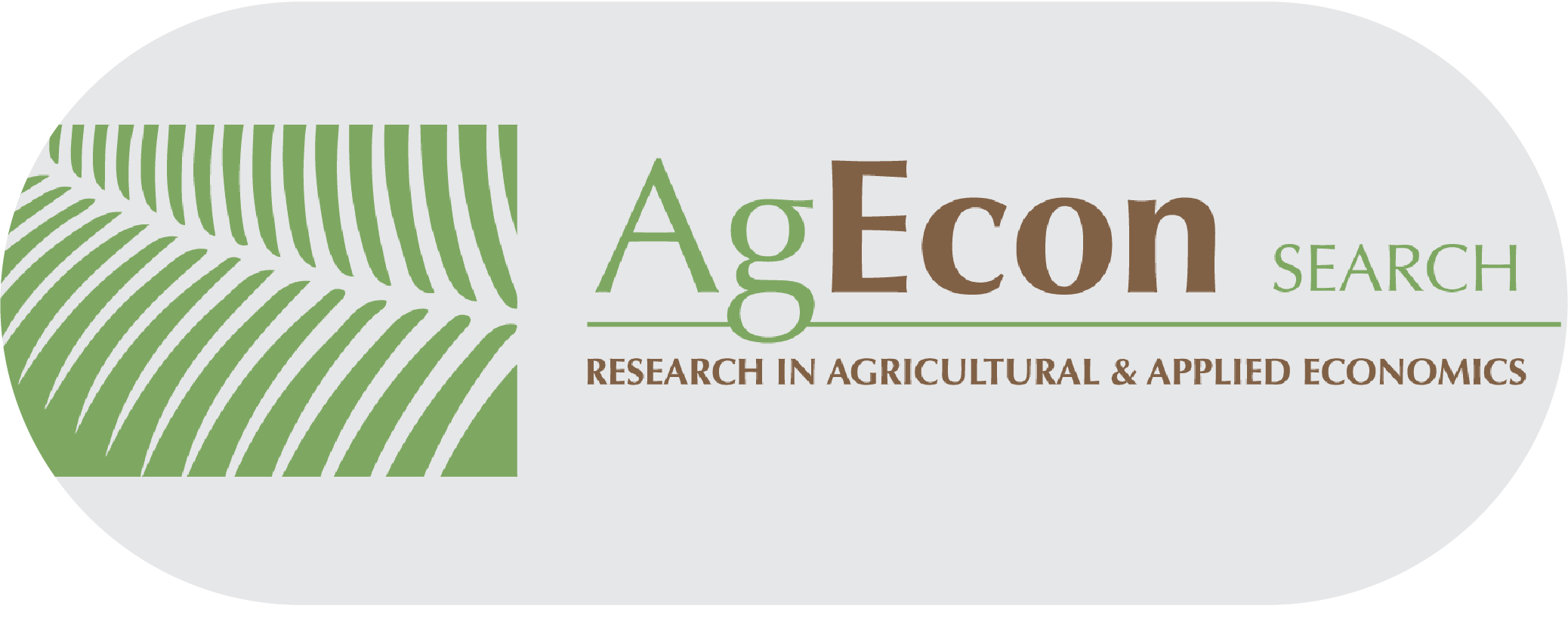Search
Search Results
-
A Quantitative Assessment of the Rurality and an Efficiency Analysis of Emigration in Romania
39-46Views:263In Romania, as in many other Eastern European countries, the early 1990s were marked by a significant emigration from the countryside as a consequence of the transition from a centralised economy to an open one and due to key changes in the political framework. The permanent emigration has predominantly been concentrated in rural areas where multiple socio-economic variables such as GDP per capita, unemployment, and public financial subsidies aimed at supporting people at risk of severe deprivation and poverty have all had a direct effect on rural depopulation. The rurality is a complex theoretical construct comprising many items and variables and is, therefore, difficult to define in a concise manner. The aim of this paper is to assess the evolution of emigration in Romania between 2001 and 2016 through a quantitative approach, estimating an index of rurality for the same period composed of a set of socio-economic variables having a direct or indirect nexus to it. In the first phase of research, a matrix of correlation and a multiple regression model has been used in order to estimate the direct links among all investigated variables. Following the quantitative methodology, in the second phase Partial Least Square Structural Equation Modelling (PLS-SEM) has been used in order to assess the main cause-effect relationships among a few selected endogenous variables and a set of socio-economic items. Furthermore, using a non-parametric Data Envelopment Analysis (DEA) output-oriented model, this research has assessed the efficiency in terms of permanent emigration from Romania estimated as an output to minimise and not as an output to maximise, as investigated by traditional efficiency approaches. In terms of efficiency, financial subsidies allocated by national authorities and the level of per capita Gross Domestic Product have acted directly on the level of emigration. The index of rurality in 2016 has been influenced in particular by he pluriactivity in farms in terms of agritourism, the dimension of farms in terms of land capital endowment, and the level of GDP per capita.
JEL Classification: Q10; Q18
-
Emerging trends in strategic planning
23-31Views:1262In today’s rapidly changing world, there is an increased need for excellent strategic planning. A firm’s survival may indeed hinge on the firm’s planning process being exemplary. Various aspects of the strategic planning process are under review today as organizations wrestle to compete more effectively. This paper reveals and describes five emerging trends or tools being utilized today by firms to more effectively engage in strategic planning. Specifically, the emerging trends and tools to be discussed in this paper are as follows:
1) Assure vision and mission statements include desired characteristics
2) Perform SWOT (Strengths-Weaknesses-Opportunities-Threats) analysis using AQCD (Actionable, Quantitative, Comparative, and Divisional) factors
3) Utilize varied sources to obtain AQCD information
4) Utilize QSPM (Quantitative Strategic Planning Matrix) analysis to determine the relative attractiveness of alternative strategies
5) Use excel-based software to facilitate and enhance the strategic planning process.
The purpose of this paper is to familiarize readers with basic new tools and techniques being used by organizations to effectively develop an improved strategic plan for the firm.
JEL Code: M21, O21
-
In search of clusters
7-17Views:253The aim of this article is to present the ‘regional cluster quick scan’as an efficient and objective tool to scan a region of interest for the presence, nature and development phase of regional clusters. The ‘tool’developed in this research is based on the relations between the state of cluster development in regions, competitiveness, and economic growth. First, a theoretical model is developed and then this model is applied to a real case to test the validity of the model. The results indicate the possibility of identifying regional clusters and their competitiveness by using Shift and Share analysis.
-
QUANTITATIVE RESEARCH OF FACTORS (CONVENIENCE OF ACCESS AND GENDER) INFLUENCING THE FOOD STORE CHOICE IN NAGYKŐRÖS
Views:103The objective of the research is to analyze the food purchasing decisions of Hungarian customers depending on priority factors (convenience of access and gender) that impact the food store choice.
To identify the characteristics of food shopping behaviour, we conducted a customer survey of 220 individuals in the city of Nagykőrös. The data collection was carried out using a standard questionnaire and an online survey on the Nagykőrös public life community social media portal, and by informing shoppers about the possibility to fill in the questionnaire in the Municipality’s posts. The sample can be considered representative based on the gender distribution of the primary food purchaser.
During the analysis of the data, in addition to descriptive statistics, we utilized factor analysis to describe the mindset of the customers, and created segments based on the factors influencing the choice of store using cluster analysis.
For the vast majority of consumers, the primary determinant in selecting a store is the affordable price level, regardless of how often they make purchases. When shopping on a daily basis, customers prioritize the store’s proximity to their residence, promotional discounts, and variety of products available. Men tend to value a relaxed ambiance and convenient parking, while women prioritize special deals and competitive prices when choosing their regular shopping location
We have identified price sensitivity, accessibility, location, and atmosphere as key factors. Throughout our research, we have categorized customers into four distinct clusters: Action-oriented family members (36.1%), Conscious shopping family members (29.9%), Price-conscious seniors (20.6%), and Curious beginners (13.4%).
A significant hurdle for Hungarian retail companies is to enhance the quantity of their loyal customers, which they can solely achieve by taking market share from their rivals (primarily other retail companies). Initially, they must determine whether their customer base favours their kind of store for everyday or bulk shopping. They must cater to the demands of their target customer base (potentially the clusters established by our research) in relation to the key factors influencing store selection and purchase frequency, in order to attain success in their business. We suggest utilizing the factors that influence store selection as segmentation criteria.
-
Corporate branding effects on consumer purchase preferences in Serbian telecom market
23-36Views:170This research is carried out to know the role of corporate branding in mobile phone network along with different influencing factors involved in the purchase of mobile telephone connections. This paper discusses corporate branding from consumer’s point of view that how much they value it and what type of role it has.This is a quantitative study. A questionnaire is used in order to investigate corporate branding and other influencing factors involved in purchase decision of the customers. Population selected for this study are Belgrade University students which is the most of Serbian youth segment and is a valuable source that gives precise information with high probability about market preferences according to the Research of Serbian republic statistical office. Primary data are obtained by collecting data from questionnaire and interview, while the secondary data are collected from various reliable sources. Primary data provide reliable content in accordance with a secondary data obtained by Serbian republic statistical office and with a Research of competitor and consumer preferences insight provided by Telenor Company. The analysis of the data has been performed in accordance with the chosen theories and summarized in a table, which serves as a tool for deriving reliable and relevant conclusions. The sample size was determined by conducting a primary study and defining the variance of primary sample and the intended number of samples was selected carefully and randomly from the population. Then the validity and reliability of the questionnaire was determined. The used questionnaire in this research consisted of 7 common, and 30 specialized questions which were supporting the hypotheses of the research. Data was analyzed using the frequency percent techniques, and in the chapter related to the deductive statistics, one-sample t test was used to analyze and approve/disapprove the questions supporting the research hypotheses. The analysis of this study reveals different set of results while making comparison between literature and empirical. It investigates the relative importance of the corporate branding to the customers in mobile phone telecommunication industry while making purchase decision. The findings of this study provided useful information which is helpful not only for the students but also for the brand managers of mobile telecom operators that how they can improve their company’s strategic position for longer period of time through corporate branding to trigger more customers and for a good brand.
-
Corporate branding effects on consumer purchase preferences in Serbian telecom market
91-104Views:234This research is carried out to know the role of corporate branding in mobile phone network along with different influencing factors involved in the purchase of mobile telephone connections. This paper discusses corporate branding from consumer’s point of view that how much they value it and what type of role it has.This is a quantitative study. A questionnaire is used in order to investigate corporate branding and other influencing factors involved in purchase decision of the customers. Population selected for this study are Belgrade University students which is the most of Serbian youth segment and is a valuable source that gives precise information with high probability about market preferences according to the Research of Serbian republic statistical office. Primary data are obtained by collecting data from questionnaire and interview, while the secondary data are collected from various reliable sources. Primary data provide reliable content in accordance with a secondary data obtained by Serbian republic statistical office and with a Research of competitor and consumer preferences insight provided by Telenor Company. The analysis of the data has been performed in accordance with the chosen theories and summarized in a table, which serves as a tool for deriving reliable and relevant conclusions. The sample size was determined by conducting a primary study and defining the variance of primary sample and the intended number of samples was selected carefully and randomly from the population. Then the validity and reliability of the questionnaire was determined. The used questionnaire in this research consisted of 7 common, and 30 specialized questions which were supporting the hypotheses of the research. Data was analyzed using the frequency percent techniques, and in the chapter related to the deductive statistics, one-sample t test was used to analyze and approve/disapprove the questions supporting the research hypotheses. The analysis of this study reveals different set of results while making comparison between literature and empirical. It investigates the relative importance of the corporate branding to the customers in mobile phone telecommunication industry while making purchase decision. The findings of this study provided useful information which is helpful not only for the students but also for the brand managers of mobile telecom operators that how they can improve their company’s strategic position for longer period of time through corporate branding to trigger more customers and for a good brand.
-
IMPACT OF CLIMATE CHANGE ON PEOPLES’ LIVELIHOOD AND LIVESTOCK PRODUCTION IN UGANDA
Views:265Livestock sector in Uganda contributes significantly towards individual household income and food security and even though peoples’ dependance on livestock production for survival in Uganda is a reality, it’s also undeniable that livestock, which provides food and revenue on a worldwide scale, would be vulnerable to the direct or indirect consequences of climate change. Agriculture contributed 24.1% of the Uganda’s GDP in the financial year (FY) 2021–2022 and according to the Uganda bureau of standards (UBOS), agriculture employs over 70% of Uganda's working population. The purpose of this present study was to to evaluate the impact of climate change on peoples’ livelihood and livestock production in Uganda. Bibliometric analysis was the quantitative technique used for reviewing and describing published publications that assisted in evaluating academic works from secondary data obtained on digital databases in the context of this study. The VOS viewer software was used as a tool to perform the co-occurrence analysis, and then to realize the visualization of the impact of climate change on peoples’ livelihood and livestock production in Uganda using articles analysed on platform research with associated references from the Web of Science database. The visualisation highlighted topical areas that reflect the impacts of climate on peoples’ livelihood and livestock such as diseases, drought, coping strategies, greenhouse gases, drought, vulnerability, dry lands, mobility among pastoral communities, low productivity, reduced forage resources, elevated temperature extra all of which negatively affects the economic levels of individuals and the national income from livestock either directly or directly. Conclusively, interventions that are aimed at improving climate smartness in Uganda’s livestock farming communities may have significant food security and income benefits for different livelihoods.
Keywords: climate, livestock animals, livelihood, income
-
Nexus of non-farm enterprises and rural households’ livelihood: evidence from Nigeria
Views:202Agricultural sector in Nigeria is faced with diverse challenges that threaten the survival of rural households who constitute a significant proportion of the country’s population, thereby forcing them to diversify into alternative occupations outside farming. This study assessed the contributions of non-farm enterprises to livelihood of rural households in Osun State, Nigeria. The quantitative data were elicited from120 rural households’ heads across the state. The data collected analysis appropriate statistics. Results revealed that majority of rural households were involved in multiple non-farm enterprises and provide full-time employment for majority. Many were favourably disposed to contribution of non-farm enterprises to their households’ livelihood. Majority indicated that non-farm enterprises contributed moderately to their households’ livelihood. Income from non-farm enterprises, association membership and age were significantly correlated with the contribution of non-farm enterprises to rural households’ livelihood. It was concluded that non-farm enterprises play significant roles in sustaining the livelihood of rural households in the study area
-
Factors associated with sustainability of agripreneurship interest among graduate youth in Southwestern Nigeria
Views:363The paper examined factors associated with sustainability of agripreneurship interest of graduate youth in Southwestern Nigeria. It specifically described the socio-economic characteristics of the respondents; identified their agripreneurship activities of interest and identified factors associated with their interest. A multi-stage sampling procedure was used to select 185 respondents from the selected the Local Government Areas in Southwestern States, quantitative and qualitative data were collected using semi structured questionnaire and Focus Group Discussion (FGD) respectively. Data were analyzed using descriptive statistical tool such as frequency counts, percentages, means and standard deviation while factor analysis was used to isolate crucial factors associated with sustainability of agripreneurship interest of serving graduate youth in the study areas. Results showed that respondents had a mean age of 26.18 ± 2.74 years and majority (75.7%) were not graduates of agriculture. The agricultural enterprises of interest to the respondents were poultry farming (67.6%)’ fish farming (56.5%) and snail farming (50.9%). Crucial factors found to influence sustainability of graduate youth’s interest in agripreneurship were motivational, parental influence, community asset and institutional factors among other. The study concluded that these identified factors were germane to the sustainability of graduate youth’s interest in agripreneurship in Southwestern Nigeria.
-
Analysis of the chain of the banana industry of Ecuador and the European market
57-65Views:1303Bananas are among the four main crops in the world, including wheat, rice, and corn. It is the most exported fresh fruit in the world in terms of volume and value. The European Union (EU) is the largest banana importer globally with an estimated volume share of 33%. Ecuador is the top exporter since it is responsible for one-quarter of the world banana exportation. It represents 22% of total world exports, 27% of total agricultural exports in the country and 8% of the value of all exports (including oil). The present work analyzed the chain of the banana industry of Ecuador and its position in the EU market. A non-experimental empirical method with a quantitative and qualitative approach was used supported by scholarly literature and secondary research data collection. Results obtained show that the main countries destination shipped 87.8 % of total bananas exported from Ecuador in the period of 2007 – 2017. The largest importer of Ecuadorian banana is the European Union (28.9%). In Ecuador, approximately 78% of the banana producers are small companies, by adding the medium ones 95.6% is reached. Thus, the production of bananas in the country is mainly based on the family economy. In 2019, the official banana box price for producers in Ecuador is USD 6.30. In the EU market, it can reach over USD 18.00. It suggested an unfair payment to small and medium producers.
JEL CODE: Q13, M16, M21
-
ANALYSIS OF SOCIAL AND ENVIRONMENTALLY CONSCIOUS BEHAVIOR AS PART IN COMPANIES
Views:168This research estimates public perceptions of corporate environmental responsibility and the use of clean energy in terms of how businesses exhibit environmentally sensitive behaviour through their operations and how clean energy is used within daily business operations. It carries out a large-scale survey among 100 participants, analyzing responses across various dimensions of corporate social responsibility, especially those relevant to environmental practices. The findings show that there is a high public expectation of business environmental responsibility, as 82% of the respondents regard it as very important for companies to undertake social responsibility activities. The same percentage (80%) feel it is essential that companies be liable for environmental damage. The same study also firmly focused on carbon emission reduction since 91% rated it somewhat or very important for companies to reduce their carbon emissions.
On the other hand, a perception gap was indicated since 52% of the respondents strongly believed that companies genuinely care about their social and environmental impact. This contrasts with the 77% of participants publicly declaring support for corporations promising to reduce environmental degradation. On the use of clean energy, while the research does not give an explicit quantitative status of the practice by corporate entities, it generally creates a good case demonstrating popular support for such corporate initiatives. A 72% rated a firm's effort to reduce its carbon footprint as essential, representing a clear expectation of adopting clean energy within corporate operations. The study finds considerable public mandate for companies to engage in environmentally sensitive business practices, including using clean energy. It also calls for improving business environmental responsibility programs, better communication transparency, prioritizing clean energy, and using environmental initiatives to gain market advantage. The findings and recommendations carry significant implications for corporate strategy, public policy, and future research in corporate social responsibility and environmental sustainability.
-
Water footprint in Hungary
83-91Views:257More and more news report on water-related extreme environmental phenomena. Some of these are natural, which are often beyond the human race. But others are definitely due to anthropogenic effects. I think the water footprint index is able to highlight national and international water-use processes and gives us the opportunity of organizing a sustainable, consumer-, environmental- and governancefriendly management. 81% of the fresh water withdrawal is from surface water bodies in the EU. In Europe as a whole, 44% of abstraction is used for energy production, 24% for agriculture, 21% for public water supply and 11% for industry. Public water supply is confined to ground waters. To the water resources related human activity caused qualitative and quantitative amortisation will grow worse in the foreseeable future due to the climate change. Beside seasonal differences the sectoral differences are increasingly becoming critical between different areas, such as Southern and Western Europe. The former, wrong agricultural support system has worsened the situation since it gave financial aid for the used improper techniques of water-intensive crop cultivation. By today, this seems to be solved. Public water abstraction is affected by many factors, of which mostly are based on social situation and habits, but technological leakage receives a big role as well. Interesting, that for example the residents’water consumption in Eastern Europe decreased because price were raised and regular measurements were introduced. But in Southern Europe it increased due to tourism in the past period. Industrial water withdrawal decreased across Europe because of the decline of industry and the development of technologies. According to the European Environment Agency (EEA), the Union needs a sustainable, demand-driven leadership which focuses on the preservation and use efficiency. This have already appeared in politics and legal administration as well. Current research calls the attention to the significance and difficulties of this kind of domestic estimation presented trough the water footprint calculation of bread and pork in Hungary. The received data indicate the domestic water consumption trends in a modern approach. There is no doubt for me about the urgent necessity of water footprint calculation because as a result innovative, sustainability supported environmental, social, economical, and political relationships can be created – not just on local, regional or national level, but on interregional, European and even global stage.
-
Disciplines and practices for selection and workplace orientation within an American company
83-88Views:428The primary objective of this essay is to present how selection and orientation at the workplace are regulated and practiced at an American profit oriented company. Moreover, considering these practices to outline the disciplines which determine and influence them. The first part of this essay is a literature review which specifically illustrates various perspectives of selection and orientation at the workplace. Following this review, the objectives of this paper are enumerated. The next part presents the case study, the half-structured interview and the questionnaire methods used for this research. The results and the discussion parts are separated, because the results part shows how selection and orientation work in practice and then, by examining the results in some detail, the discussion part presents the disciplines which have been extrapolated. In order to support the conceived disciplines this paper also seeks to examine the most important supporting factors in the procedure of work orientation. General and professional/organizational factors of workplace orientation have been collected. Quantitative data from an empirical analysis is used for the research. Qualitative data is a part of a future dissertation. Questionnaires were completed by 80 employees at a distributor company in the United States of America. The results clearly show that the following disciplines should be maintained through these HR processes: equal opportunity, importance of professionalism, documentary, checking, support and continuance.





